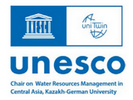



Year: 2023
Collections: Research Paper
Topics: Water
Authors: Makhmudova L., Mussina A., Ospanova M., Zharylkassyn A., Kanatuly A.
Countries: Kazakhstan
Source: Central Asian Journal of Water Research
The research aimed to assess the impact of human economic activities on the Yesil River Basin based on the observational data contained in Kazhydromet’s (Republic State Enterprise, RSE) hydrometeorological periodicals of 1933-2019. The additional analysis of numerous sources – statistics digests, online data of the Bureau of National Statistics under the Agency for Strategic Planning and Reforms of the Republic of Kazakhstan (RK), monographs and scientific papers also allowed to reliably evaluate the overall water consumption in the country.
Year: 2023
Collections: Scientific Publications
Topics: Climate
Authors: Sabyrbekov R., Overland I.
Countries: Kazakhstan, Kyrgyzstan, Uzbekistan, Tajikistan, Turkmenistan
Source: Central Asian Journal of Sustainability and Climate Research
Climate change poses a formidable threat to the Central Asian region, exacerbating preexisting vulnerabilities and necessitating enhanced adaptation efforts. The economic and environmental costs of these changing climatic conditions are substantial, compelling governments to bolster their adaptive capacity. In this study, we employ the United Nations Framework Convention on Climate Change (UNFCCC) adaptation framework and high-quality data to quantitatively measure the capacities of the Central Asian countries to adapt to the impacts of climate change.
Year: 2018
Collections: Research Paper
Topics: Water, Water law
Authors: Paisley Richard Kyle
Countries: Kazakhstan, Kyrgyzstan, Uzbekistan, Tajikistan, Turkmenistan
Year: 2025
Collections: Scientific Publications
Topics: Water, IWRM
Authors: Gafurov A., Ziganshina Dinara, Assubayeva A., Nodir Djanibekov, Abdullaev Iskandar, Bobojonov Ihtiyor, Dombrowsky Ines, Hamidov Ahmad, Herrfahrdt-Pähle Elke, Janusz-Pawletta Barbara, Ishangulyyev Rovshen, Kasymov Ulan, Mirkasimov Bakhrom, Petrick Martin, Strobehn Katrin
Countries: Kazakhstan, Kyrgyzstan, Uzbekistan, Tajikistan, Turkmenistan
Source: water-ca.org
Political tensions over water management in the Central Asia region have intensified since the Soviet era, as ecological issues like the drying Aral Sea and seasonal hydropower disruptions impact downstream countries. The paper discusses the region’s water governance challenges, including climate-induced uncertainties, water resource demands, and the limited capacity of local research institutions. While Central Asia’s governments have initiated reforms, including new infrastructure and agreements, resilience in water management remains underdeveloped. The paper also explores the role of higher education institutions in fostering capacity-building for sustainable governance, emphasizing the need for local expertise and regional collaboration. The proposed establishment of a Central Asian water research platform aims to enhance science-policy integration, promote sustainable water governance, and support informed regional cooperation on transboundary water issues.
Year: 2017
Collections: Scientific Publications
Topics: Water
Authors: Plekhanov P.A.
Countries: Kazakhstan
Year: 2023
Collections:
Topics: Water, IWRM
Authors: Domullodzhanov D., Rahmatilloev R.
Countries: Tajikistan
Source: Central Asian Journal of Water Research
Farmers in remote, arid areas, far from available water sources, need affordable water solutions for household and livestock use. In this study, the water needs and potential for rainwater harvesting (RWH) in the Kysylsu River Basin are estimated at different altitudes.
Year: 2022
Collections: Policy Briefs
Topics: Climate
Authors: Wesch Stefanie, Scheffran Jurgen Kogutenko Larissa, Rheinbay Janna,
Countries: Kazakhstan, Kyrgyzstan, Uzbekistan, Tajikistan, Turkmenistan, Afghanistan
Source:
Cooperative regional mechanisms and multi-stakeholder dialogue; adoption of local crossborder perspectives. Strengthening resilience of vulnerable communities. Monitoring and assessment of climate disaster risks in mountainous regions. Fast response mechanisms and disaster simulation drills.Investment in research on climate adaptation and disaster risk reduction; knowledge transfer and better established links between science and practitioners.
Year: 2024
Collections: Policy Briefs
Topics: Climate, Agriculture
Authors: Rieks Bosch
Countries: Kazakhstan, Kyrgyzstan, Uzbekistan, Tajikistan, Turkmenistan
Source:
The fertility of soil is depending on the minerals
available, the structure of soil, organic matter
in soil, water availability and micro organisms
living in the soil. Together they determine most of the productivity of land.
For questions about cooperation, please contact us at: